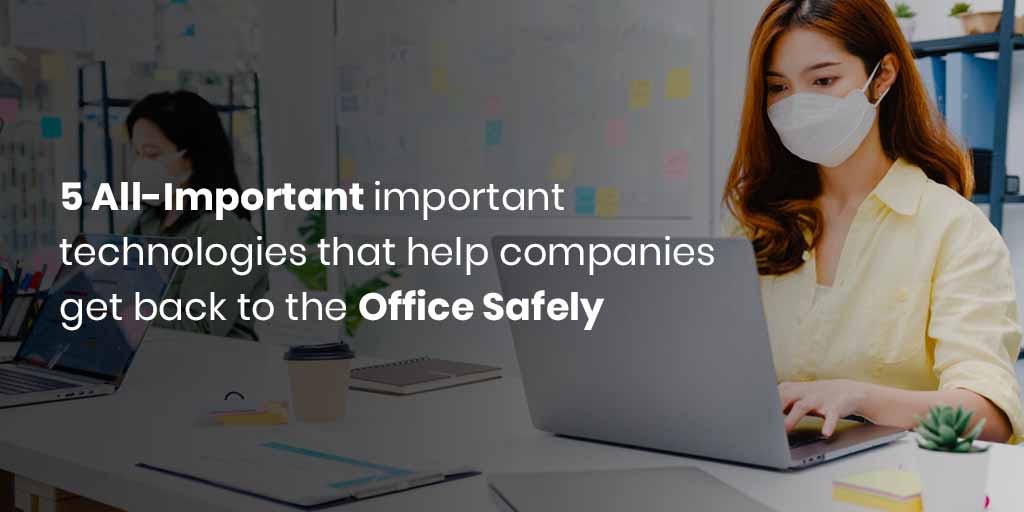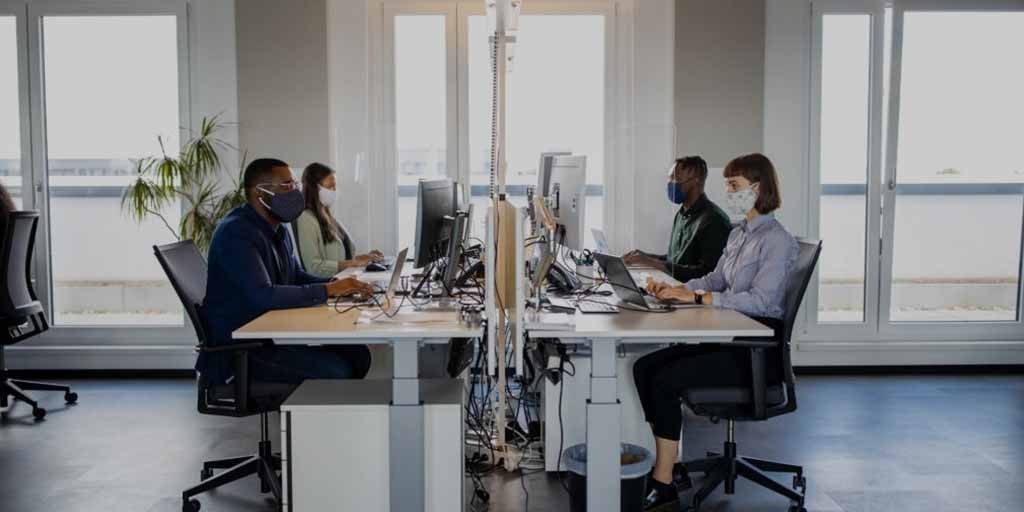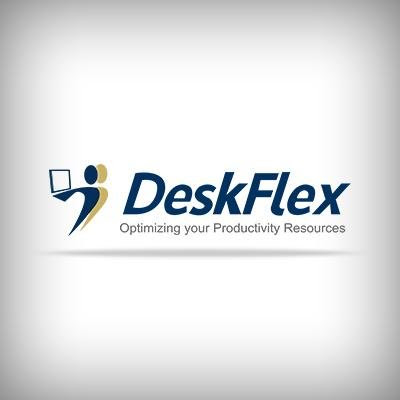
Busy workplaces and fully staffed business establishments of all sizes were the norms before the COVID-19 outbreak. At SMBs and other dynamic organisations, jammed meeting rooms are common, and brainstorming was undertaken face to face and benefited from its unplanned nature. But that's all changed now.
As organisations worldwide try to find how to bring workers back to work, tech companies believe that devices and software can assist in the return-to-work transition. Moreover, more companies are using desk hoteling systems to deploy telephone PBX switches so that the role phone will function on their staff's workstation for the day.
We're now dealing with a so-called hybrid work model: some people work from home and others from the office. In many circumstances, office workers must follow social distance regulations and take other precautions. These things can quickly come in the way of conducting business and completing tasks.
Fortunately, technology, such as Avaya support Chicago, is still on our side. It will be even more critical to assist in removing roadblocks to production and teamwork. Let's look at several key technologies that can help businesses implement new office work techniques, focusing on hybrid work. That is labour involving local and distant participation while maintaining high safety and health.
Rethinking Workplaces
COVID-19 and the measures adopted by governments in reaction have significantly influenced businesses that rely on face-to-face interaction. Workplaces that rely on in-person engagement for idea generation and creativity must rethink their processes to stay relevant in changing conditions.
Naturally, the "lockdown" situation cannot exist indefinitely because it is unsustainable. Organisations are gradually returning to offices, even if just part-time and under strict supervision. As a result, the mentioned hybrid work model is becoming increasingly common. It also encourages businesses to rethink their workplaces to provide comfortable and safe working environments for their employees. All while maintaining a high level of connectedness, interaction, and collaboration. Indeed a challenge, but not impossible.
Companies can make use of custom programming services to streamline their operations in the workplace.
#1. Use digital signage to keep people informed.
The first technology to consider is high-resolution digital status boards. Why? Because readily available knowledge is at the forefront of combating any public health concern. Many organisations now opt for clear, dynamic digital signage instead of silly, barely legible statements on walls. Employees can find valuable tips and instructions on keeping safe and healthy on screens throughout the office.
Status display software is much faster and more reliable than printed notifications. With new information always coming to the fore, they are much easier to keep up with. They're also much more straightforward and enticing, ensuring team members pay close attention. This contradicts posted advisories, which quickly fade into the background, and employees frequently forget.
#2. Wireless presentation systems
What is recognised by people as social distancing is one of the essential measures in combating COVID-19. That means preserving a six-foot or two-meter gap between individuals. This approach is well-suited to wireless presentation solutions and custom programming services. They provide data in the most literal way. That's without physically touching any standard wires or ports, let alone a shared pc or similar device.
Each team member who attends a meeting receives a dongle or adapter with these solutions. They connect it to a device and stream content wirelessly from an access point via secure, closed-system Wi-Fi. It could be a personal computer, laptop, or cellphone. People do not need to be physically close to each other or share presenting gear. In comparison to traditional meeting sets, the infection risk is much decreased. Workers can even leave their dongles in the conference room if they want to carry them outside the meeting area.
Furthermore, the previous shuffle of workers switching places and getting up to plug and unhook wires from a shared projector, which required a lot of fussing, is no longer necessary. Many devices nowadays are entirely wireless, requiring only one physical button to be pressed.
#3. Video conference tools
People will undoubtedly remember the so-called Zoom Boom as one of the most significant events 2020. Because of the rise of remote and hybrid work, video conference applications like Zoom and Microsoft Team, particularly the former, have exploded in popularity.
It has several features designed for video conferencing. The most important of these is a seamless and straightforward split-screen display. Video conferences are highly productive due to the flexibility available, compensating for losing face-to-face engagement.
#4. Workspace designation tools
Companies may use hoteling software to streamline their processes in assigning workspaces to remote and on-site workers. Desk hoteling software is valuable for assisting firms with their hot-desking and desk hoteling activities. It can also help them in the following ways:
● Reduce real estate expenditures by making more room in the office.
● Transparency and clarity can be achieved through data-driven visibility.
● Maintain a focus on people, including their comfort, sanitation, and cleanliness.
● Keep track of how much space you use and how well you use it.
You can reduce team member uncertainty with the right hoteling software, which can assist team members in finding the most appropriate room for any particular meeting or work.
#5. Desk and workspace reservation system
Implementing an effective and efficient desk and workspace reservation system, such as FlexCube, would benefit your organisation. It enables a streamlined process using exceptional features such as the book now and check-in or check-out function.
● Book now - It's the most straightforward and most convenient method to reserve any desk or workspace on request. Users can then check upcoming bookings for that area and even secure it by confirming that it is available or reserved.
● Check-In And Check-Out - Users can use the check-in and check-out tool to ensure the reservation is active. Above all, it has a function that includes four colours - green, red, blue, and yellow - each has its own set of specifications.
Adapt and Succeed
The bottom line is that the technologies to change our work are already in place. They are relatively inexpensive and straightforward to deploy. Offices don't need to be entirely redesigned; they need to be tweaked. You also don't need to make large-ticket expenditures that will strain your company's budget more during these challenging times.
The new routine entails spending a small amount of money on technology that promotes health and security, fosters confidence and ensures consistent output.
#5 All-Important-Technologies, #Deskflex #workspace-reservation-system #Video-conference tools, #Rethinking-Workplaces




0 Comments